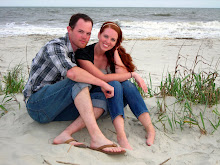To learn about recognizing meter (also known as "Scansion") keep reading, if not please skip to the next post HERE.
Meter is determined by two things, "feet" and line length.
A "foot" is a unit of poetry that measures the stresses in a line. When you read a poem aloud some words are louder (or stronger than others), those words are "stressed" (or accented syllables) and the soft words are "unstressed" (or unaccented syllables).
Usually poets make a / mark above syllables that are "stressed" and a U mark above syllables that are "unstressed."
Here is a cheet sheet of common metrical feet, the CAPITALIZED words are the stressed or accented syllables.

Sometimes clapping or tapping your foot can help you find the rhythm in a poem and help you recognize which syllable is stressed or unstressed. Read this sentence aloud and see if you can recognize the stressed syllables:
I do not eat green eggs and ham,
I do not eat them Sam-I-am.
While you can stress any syllable in poetry, most would read this line:
While you can stress any syllable in poetry, most would read this line:
i DO not EAT green EGGS and HAM,
i DO not EAT them SAM-i-AM.
Hint: Many times small words like the, an, and, are, to, a, of, is are unstressed while short nouns (sky, bath, love, hand) are usually stressed syllables.
------------------------------------------------------------------------------
A Line in poetry is measured by the amount of "feet" they contain.
Here is a cheat sheet of common metrical lines:
 When you "scan" a poem you are counting the number of "feet" in a poem and recognizing what type of "feet" they are.
When you "scan" a poem you are counting the number of "feet" in a poem and recognizing what type of "feet" they are.In other words, if a line had four iambs and one spondee it would be a pentameter (just add up the "feet", i.e. the iambs and spondees, to know how many feet are in a line, in this case there are five making it a pentameter).
If all those feet were iambs then it would be iambic pentameter just like if all the lines were trochees then it would be trochaic pentameter.
Is all this starting to make sense yet?
Read the lines aloud a few times and try and figure out which line is anapestic, iambic, and trochaic, try writing them and adding the / above the word for stressed syllables and U for unstressed syllables like this:

"Was this the face that launch'd a thousand ships
And burnt the topless towers of Ilium?"
And burnt the topless towers of Ilium?"
"Listen, the hay bells tinkle as the cart
Wavers on rubber tyres along the tar"
"But lo, the old inn, and the lights, and the fire
And the fiddler's old tune and the shuffling of feet;"
Remember:
Iambic sounds like tee TUM tee TUM
Trochaic sounds like TUM tee TUM tee
Anapest sounds like tee tee TUM
Dactyl sounds like TUM tee tee

No comments:
Post a Comment